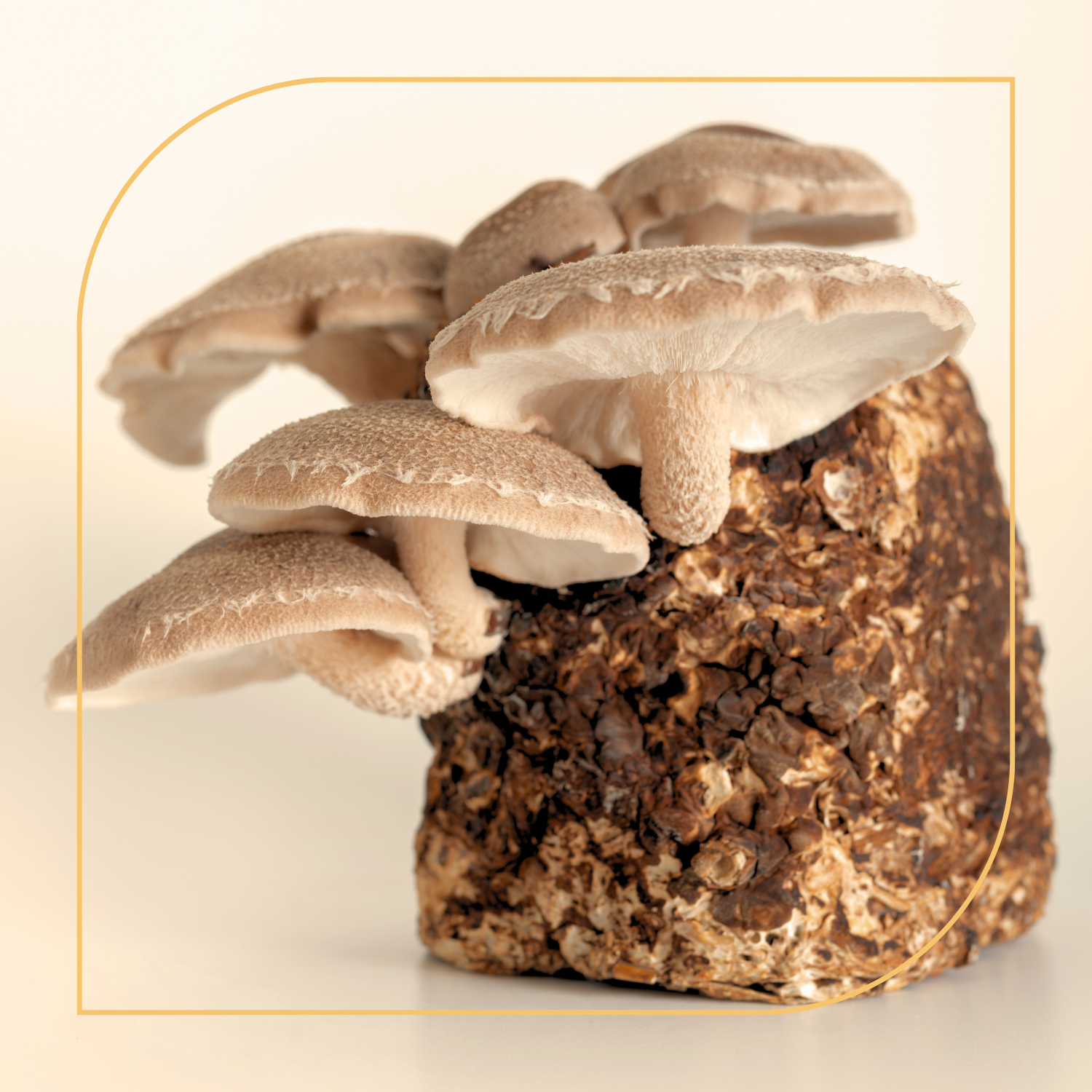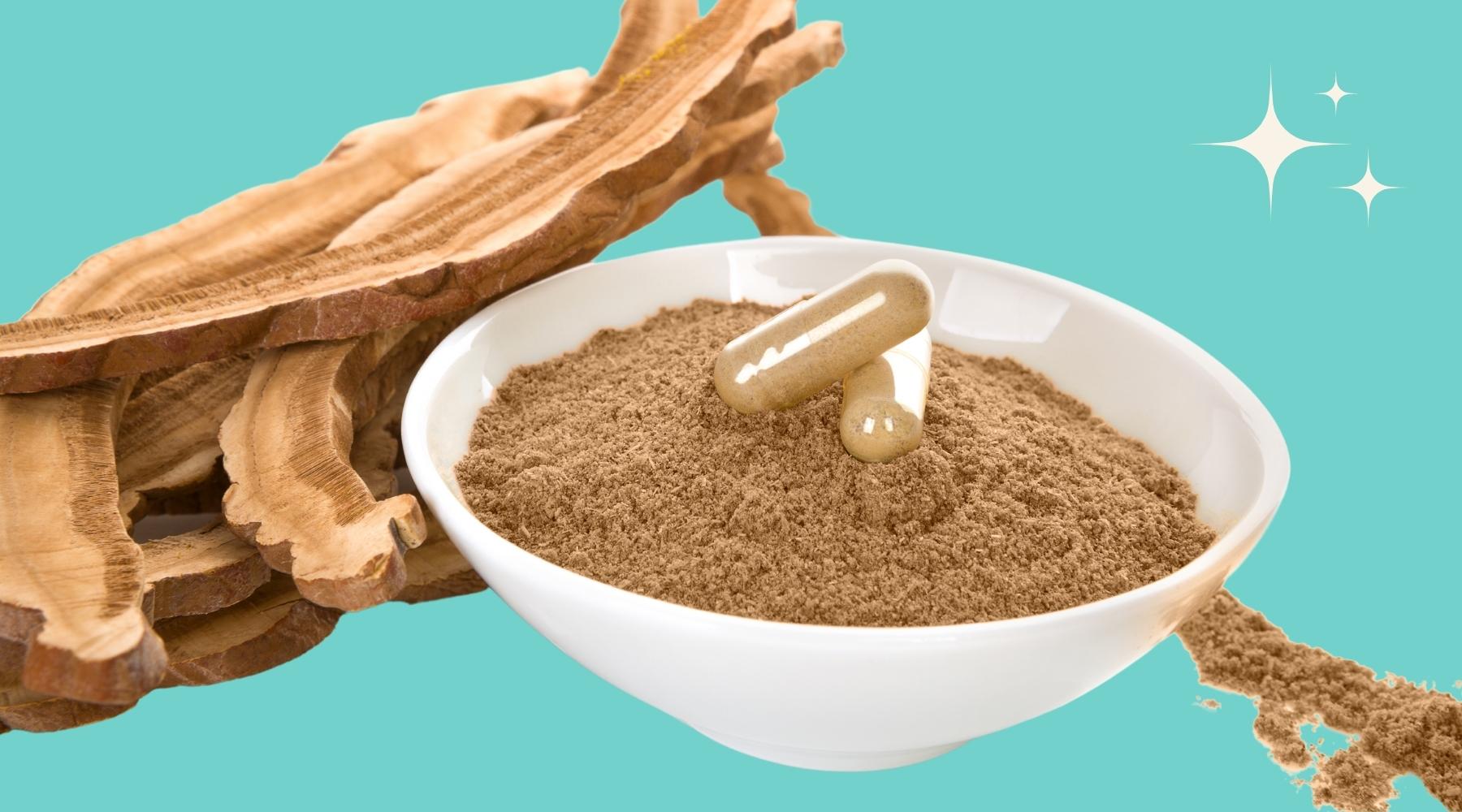Before we dive deep into the benefits of functional mushroom fruiting bodies versus mycelium, let’s first establish what is a fruiting body and what mycelium is.
Traditional Chinese Medicinal Mushrooms, or Functional Mushrooms as we call them, are often grown on wood logs or a substrate made up of rice, oats, or other grains. A mushroom has three stages to its life cycle - spores, mycelium, and fruiting body.
Spores
Mushroom reproduction takes place by tiny spores being released from the mature above-ground fruiting body. Spores fall onto the ground or substrate and typically sprout within 1-3 weeks. The spores grow thin mycelial threads called hyphae to begin absorbing nutrients. Two compatible hyphae grown from opposite types of spores grow together to form a functional mycelial unit.
Mycelium
Mushroom mycelium, once formed, are akin to the roots of a plant although finer and more translucent. This part of the mushroom that forms underground is called hypogeous. Mycelium requires a forest floor or substrate on which it can decompose and feed. In nature, this is most often dead organic matter from plants or animals. As the mycelium grows, it creates enzymes and other substances to help it digest and take in nutrients. Some of these bioactive compounds diffuse into and remain in the surrounding environment.
Mycelia are also used by trees and plants as a conduit for communication, like the internet of the forest as they are sometimes referred to, connecting plants in an exchange of sugars, nutrients and information. The mycelium ensures the health of the fruiting body but also serves a much grander purpose of supporting the health of all plants in the area. Mycelium is difficult to harvest in nature but can be produced in a substrate that renders it viable for harvest and use, either raw or concentrated into an extract.
Fruiting Body
As the mycelium grows and differentiates, it forms primordia (baby mushrooms) that will grow into a fruiting body. As it grows and develops, the hyphal knot transitions to become a mature fruiting body. Once a fruiting body reaches maturity, the cap opens and releases hundreds of thousands of spores to start the cycle over again.
Mature fruiting bodies that appear above ground, the body of the mushroom, are called epigeous. Fruiting bodies are the spore-producing structures that happen during the reproductive phase of the fungus’s life cycle. They only form if the environmental conditions are just right.
The fruiting body is a short-lived stage of the mushroom life cycle and its cell walls are thick and resilient to support its weight. To retrieve nutrients such as polysaccharides from this tough-to-digest tissue, the fruiting body is most often concentrated into an extract.
Fruiting Body or Mycelium Formulations – What is the difference?
Now that we are familiar with the physical properties of functional mushrooms, let's dive in and explore some of the key differences between the fruiting body and the mycelium formulations. Differentiating them will help determine which mushroom powder or supplement will best suit our needs.
Fruiting bodies are harvested above ground, and thus are already isolated, whereas the mycelia when harvested are interwoven with the medium or substrate they grow in and draw nutrients from, thus making them very difficult to separate and isolate.
Due to this difficulty in separation, mycelium powders or extracts often contain varying amounts of the growing medium or substrate in the product.
Some of these substrates such as fermented brown rice have shown to have some benefit for the gut and immunity but are generally not as well studied and act as a dilutant to the more novel beneficial compounds produced naturally within the functional mushrooms.
The terms Full Spectrum or Whole Mushroom are often used to describe the use of both mycelium and fruiting body in the functional mushroom formulation. If a provider claims they are using both mycelium and fruiting body, it is important to quantify how much fruiting body they are using as an overall percentage.
Fruiting bodies have been studied more robustly. Their potential benefits have been identified to a much greater degree and over a much longer period, going back many decades in the peered reviewed journals. Mycelium has been studied, but to a lesser degree and with fewer controls.
Fruiting Body or Mycelium - Which one is right for me?
Both the fruiting body and the mycelium contain valuable compounds that can be used in functional mushroom extracts; however, the fruiting bodies contain a significantly higher content of almost all the desired naturally occurring medicinal compounds than the mycelium. Compounds such as polysaccharides, triterpenes, sterols, polyphenols, prebiotics, antioxidants, vitamins, and minerals are produced in much higher concentrations in the fruiting body, from 15 to as much as 500 times higher concentration. Compounds such as nucleosides, statins, germanium, and hericenones can only be derived from fruiting bodies.
Below are just a few examples of some of the compounds and benefits that can be derived in abundance from fruiting bodies:
Triterpenes for Liver, Blood, and Bone Support
The high content of triterpenes in the fruiting body has been shown to increase red blood cells and act as a soothing balm for the liver, blood, and bone marrow, offering natural protection against inflammation and degradation caused by alcohol and other toxins.
Ergosterol, Lovastatin for Healthy Cholesterol
Ergosterol is a fungal sterol found in the fruiting body that behaves similarly to vitamin D helping the body upregulate and downregulate various integral systems in the body including the upregulation of HDL (good cholesterol) and the downregulation of LDL (bad cholesterol).
A functional mushroom’s fruiting body also contains Lovastatin, which belongs to a group of compounds called statins. This natural statin is a beneficial compound that has been shown to support the body's natural cholesterol management within normal ranges, thus supporting cardiovascular health.
Hericenone for Cognitive and Nerve Function
Hericenone, one of the most unique and well-studied compounds within the Lion’s Mane mushroom has been shown to stimulate the production of Nerve Growth Factor (NGF), which is important in many bodily functions but particularly in the process of neurogenesis. This compound helps with the regeneration of an important component of your nervous system called the myelin sheath, a substance that wraps around the axons (space between your neurons) in your nerves and allows for more efficient neurotransmission. Studies are ongoing on the use of Hericenones and Erinacines to improve memory, cognition, neuropathy, and nerve damage. It should be noted that dual extraction (water and alcohol) has been shown to improve the uptake of Hericenones and Erinacines through the blood-brain barrier. It should also be noted that Hericenones can only be found in the fruiting body while Erinacines can only be found in the mycelium.
Vitamin B12 for Vitality in Vegans
The fruiting bodies of functional mushrooms have a rich supply of vitamin B12. Many vegans and vegetarians struggle to gain their vitamin B12 supply without supplementation. A functional mushroom’s fruiting body can be an excellent natural source of vitamin B12 for vegans and vegetarians.
A more comprehensive list and elaboration of all The Bioactive Compounds In Functional Mushrooms and their many benefits can be found in this recent article.
In summary, all factors weighing in, functional mushroom fruiting bodies contain significantly more medicinal benefits, particularly in terms of improving outcomes related to cancer, heart and cardiovascular, cognitive, nerve, and autoimmune function. Mycelium extracts have less to offer in terms of variance and potency of the most studied medicinal compounds but can be useful for certain targeted applications, particularly in relation to gut and immune health.
Functional mushroom concentrates that are dual extracted (water and alcohol) from the highest quality (organic / non-GMO) fruiting bodies definitely pack the most potency for desired outcomes across the spectrum, from the gut and immune to cardiovascular, cellular, cognitive and nerve health.



